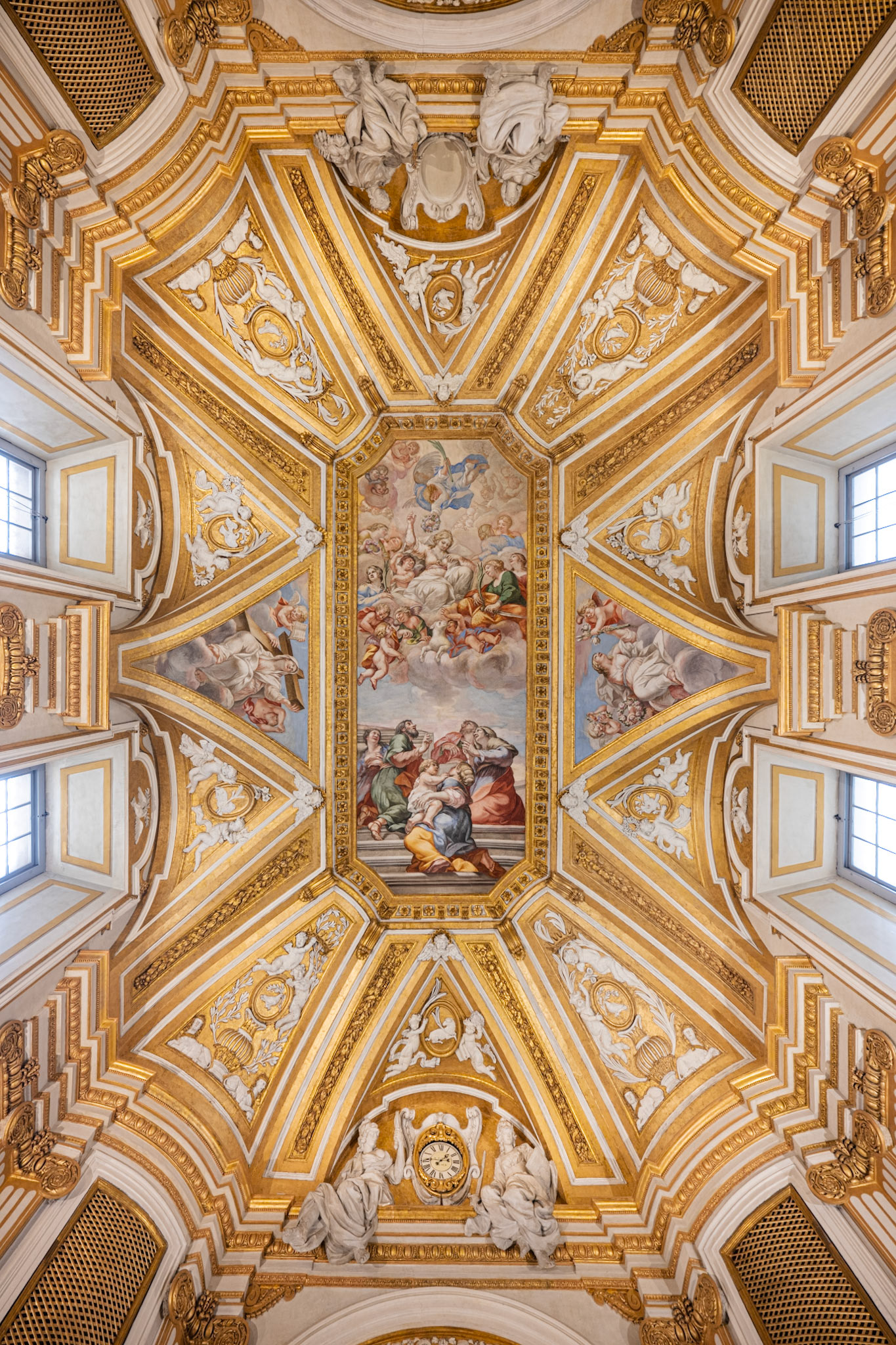Sant’Agnese in Agone, located in Piazza Navona in Rome, was built on the site of her martyrdom, believed to have occurred in the Stadium of Domitian. The origins of the church date back to the 4th century, when a shrine was erected to honor Saint Agnes. In 1652, Pope Innocent X of the Pamphilj family commissioned the construction of a grand Baroque church to replace the existing structure. The project initially began under the direction of architects Girolamo Rainaldi and Carlo Rainaldi, who designed the central Greek-cross plan. In 1653, Francesco Borromini was brought in to refine the design. Borromini made significant modifications, including the concave façade that elegantly curves inward toward Piazza Navona and the addition of the striking dome. The church was completed in 1672.
The frescoed dome is a masterpiece by Ciro Ferri and Sebastiano Corbellini, depicting the Glory of Paradise with vivid colors and dynamic compositions. The pendentives below the dome are adorned with frescoes of the four Evangelists. The organ of Sant’Agnese in Agone, located on the counter-façade above the main entrance, was built in 1670 by the renowned organ builder Giuseppe Testa.

Sant'Agnese in Agone - dome
The plans for the sacristy were also developed by Borromini. The barrel-vault ceiling is decorated with frescoes by Francesco Allegrini depicting the story of Mary.

Borromini sacristy with ceiling frescoes by Francesco Allegrini (1660)
You may also like